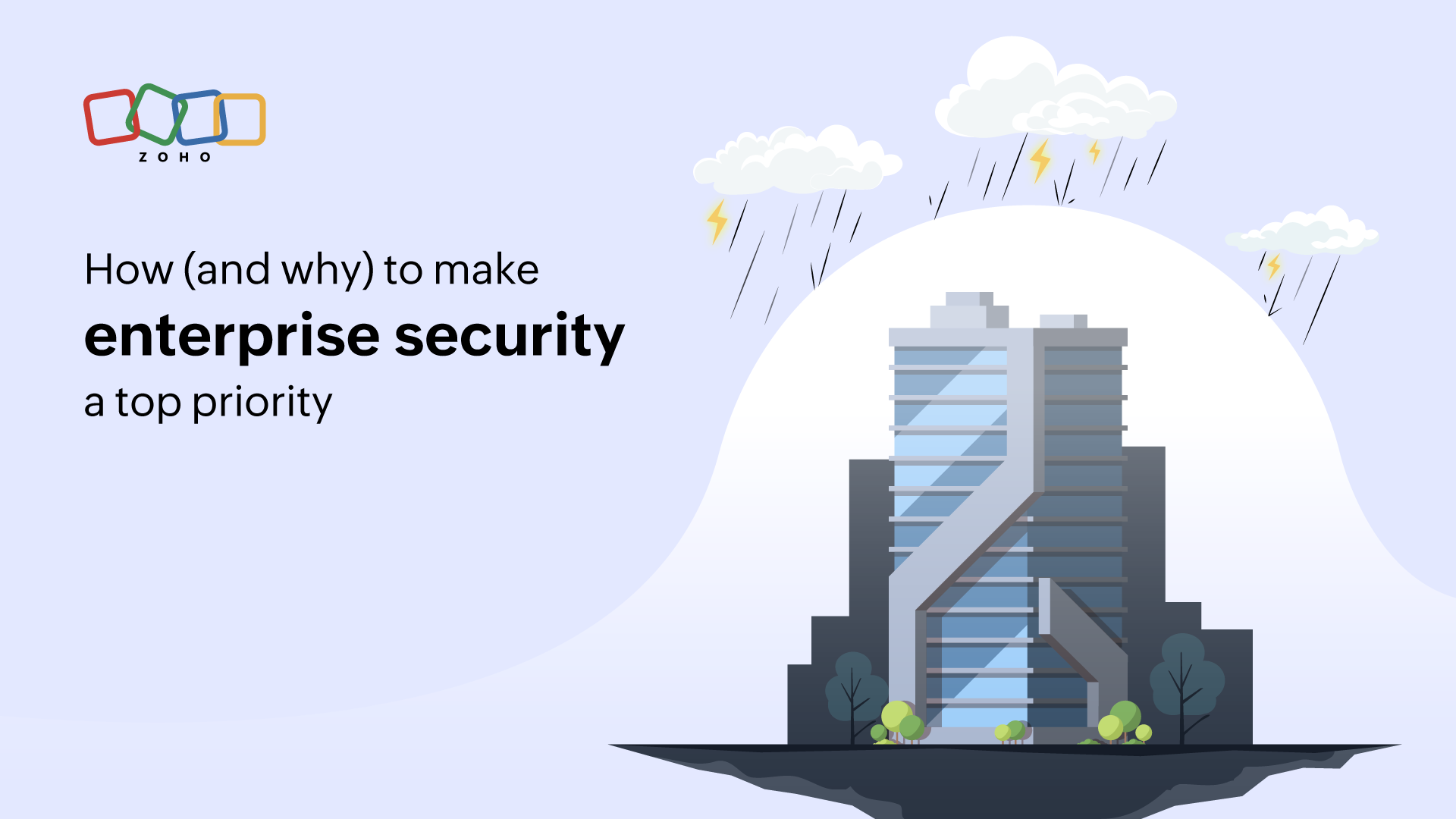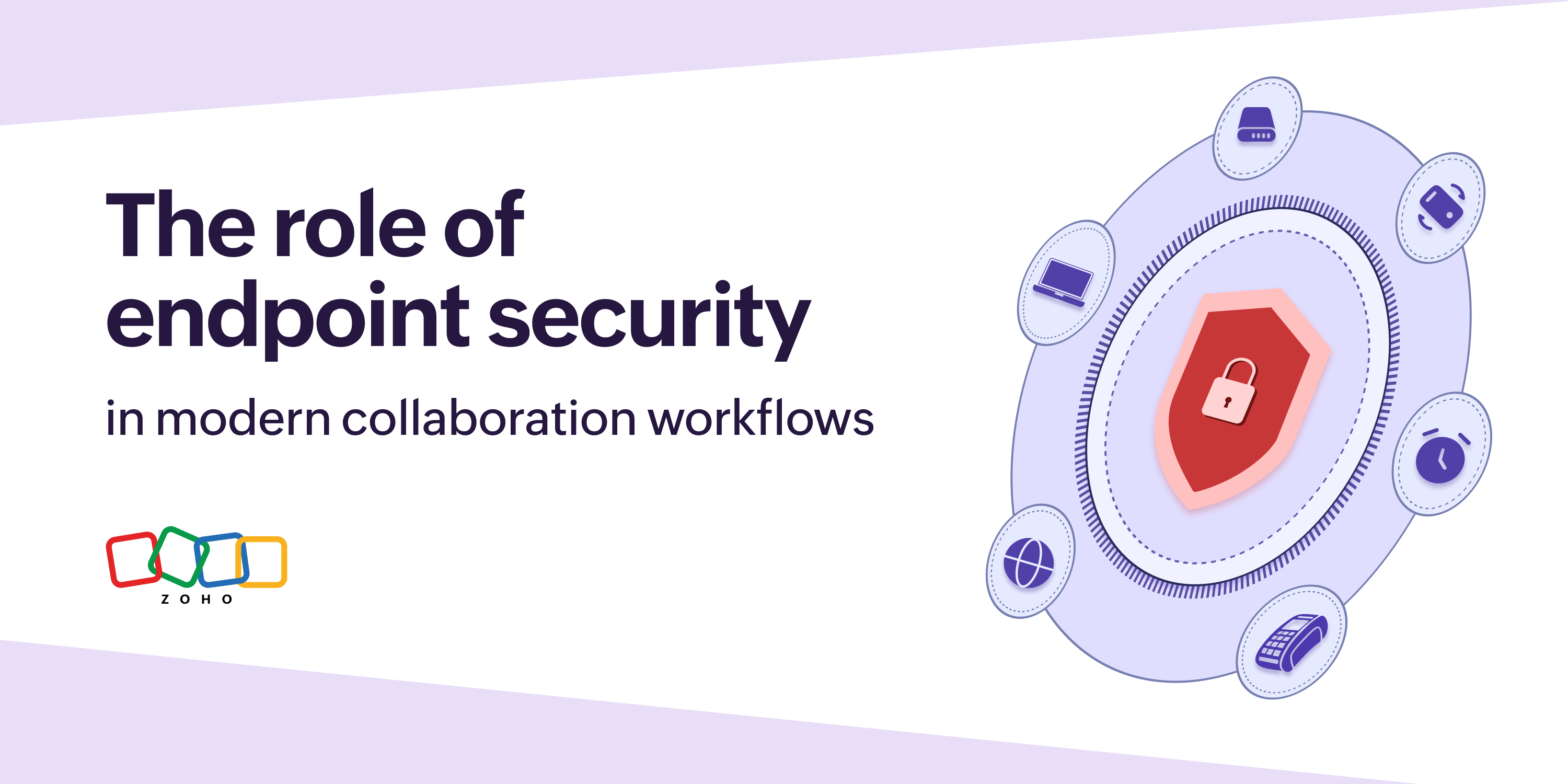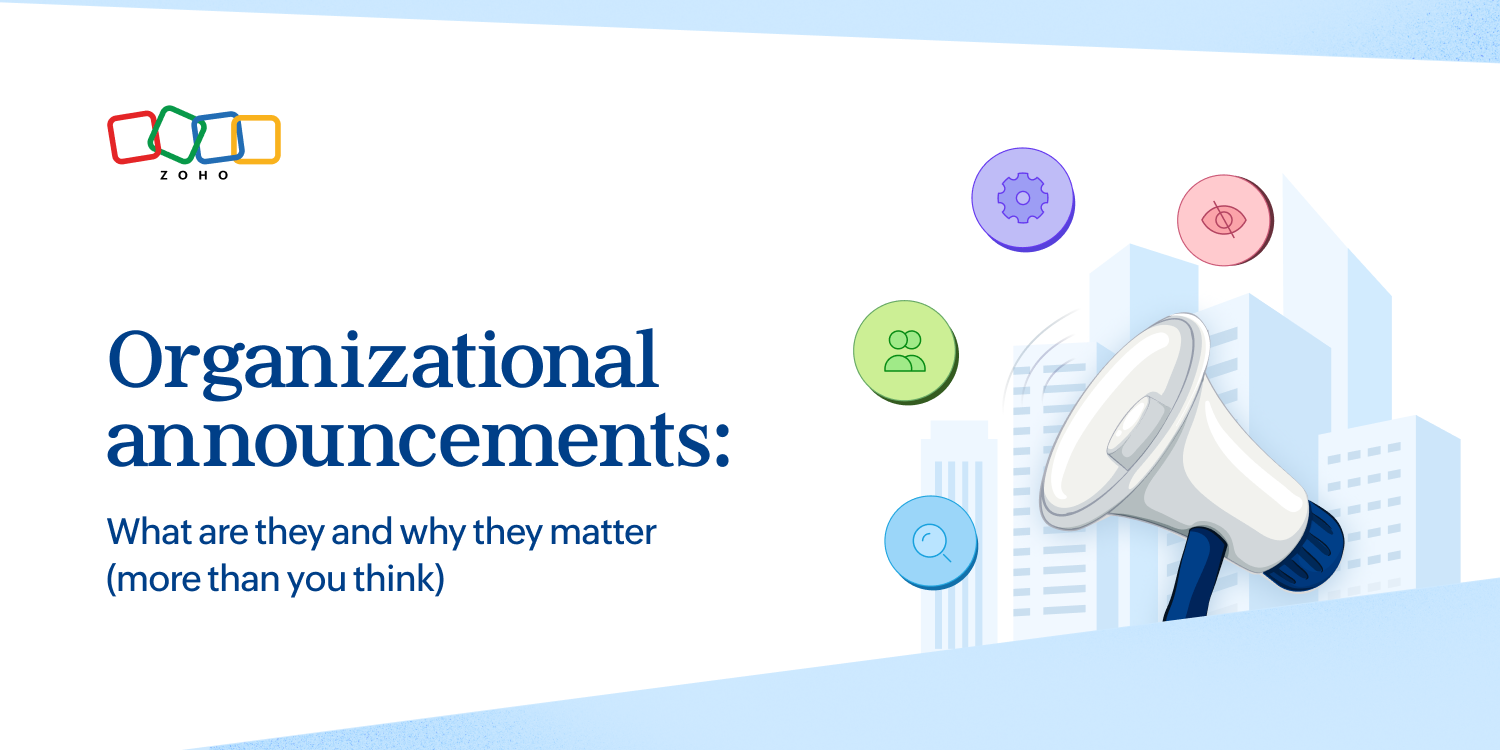- HOME
- All Products
- Collaboration
- Why enterprise security is a top priority (and how to strengthen yours)
Why enterprise security is a top priority (and how to strengthen yours)
- Published : June 25, 2025
- Last Updated : June 30, 2025
- 581 Views
- 7 Min Read
Enterprise security isn’t just a box to check—it’s a core business priority. With an estimated 40% of CISOs focused on strengthening their security defenses, it’s clear that organizations are feeling the pressure to stay ahead of increasingly common and complex cyber threats.
But how? Let’s take a closer look at the strategies and trends shaping the future of enterprise security.

What exactly is enterprise security?
Enterprise security refers to the practices, policies, and technologies an organization uses to protect all of its information systems, data, and assets from unauthorized access, cyberattacks, and other threats.
It’s called “enterprise” security because it focuses on securing the entire organization (or enterprise) and not just individual devices or systems. It’s all about protecting a large company’s interconnected technology and data.
Put simply, it’s how an organization ensures that all of its resources and information are kept safe and, when necessary, confidential.
Why enterprise security (really) matters
Strengthening enterprise security is a priority for most leaders—and for good reason. Threats are becoming more common and complicated, and they’re having a real impact on organizations.
In one recent survey, 71% of cyber leaders say that small organizations are already at a point where they can no longer adequately secure themselves against the growing complexity of cyber risks.
Enterprises have more resources, which means they’re better able to keep up. And doing so isn’t a luxury or a competitive edge—it’s crucial for any business to remain trustworthy and resilient. Here’s why:
- Cyberattacks are inevitable. From ransomware to phishing to data breaches, every organization is a target. It’s estimated that a company falls victim to a cyberattack roughly every 14 seconds. Without strong enterprise security, businesses risk losing sensitive data and customer trust.
- Complex systems need comprehensive protection. Modern enterprises rely on interconnected systems that span cloud apps, on-premises servers, mobile devices, and more. Weaknesses in any link can jeopardize the entire network (and all of your data).
- Compliance isn’t optional. Many industries, like healthcare and finance, have strict regulations related to data privacy and security. Failing to meet these standards can lead to hefty fines, lawsuits, and reputational damage.
- Downtime costs more than you think. A single security breach can cause operational disruptions, lost productivity, and straight financial losses. According to IBM, the global average cost of a data breach is $4.88 million. That’s worth remembering whenever you think the cost of any proactive security measures is too high.
- Trust is everything:95% of Americans worry about their personal data being exposed in a corporate data breach. And, when 66% of US consumers would not trust a company that falls victim to a breach with their data, you need your customers, partners, and employees to know their information is safe. Robust enterprise security helps build and maintain that trust.
Yes, enterprise security is about preventing attacks—but it’s also about preserving your organization’s integrity, reputation, and ability to operate effectively.
5 common threats to enterprise security
Unfortunately, there’s no shortage of challenges that can stand in your way of protecting your systems and data. Here are five of the most pressing threats enterprises are dealing with.
1. Geopolitical tensions
According to the World Economic Forum’s Global Cybersecurity Outlook 2025, 60% of organizations state that geopolitical tensions have affected their cybersecurity strategy. Operational disruptions are the largest concern, with 45% of CISOs saying that’s the cyber risk they’re most worried about.
2. Increasingly complex cyber risks
Security is evolving—but it often seems like risks are evolving even faster. Attackers are using more sophisticated tools, like AI-powered malware or advanced persistent threats (APTs). This complexity makes it harder for organizations to detect and respond to incidents quickly. According to IBM, organizations with more complex IT environments face breach costs 34% higher than those with simpler infrastructures.
3. Human error
Even the most advanced security technology can’t prevent breaches caused by human error. Verizon’s 2024 Data Breach Investigations Report found that 68% of breaches involved a non-malicious human element—whether it was falling for phishing scams, misconfiguring systems, or losing devices.
4. Supply chain vulnerabilities
A company’s security is only as strong as its weakest link, and often that link lies outside its walls. Third-party vendors, contractors, and software suppliers can introduce vulnerabilities that are difficult to control. In a 2022 survey, 54% of organizations said they had been breached through a third party in the previous 12 months.
5. Ransomware attacks
Ransomware continues to be one of the most damaging types of cyberattacks. Cybercriminals are increasingly targeting enterprises, demanding higher ransom payments and using double extortion tactics (where they both encrypt data and threaten to leak it). According to Sophos’s State of Ransomware 2024 Report, 59% of organizations were hit by ransomware last year, and the average recovery cost was $2.73 million—not including the ransom payment.
4 practical steps to strengthen your enterprise security
While there’s no way to eliminate all security risks facing your organization, there are a few best practices you can implement to stay ahead of potential threats.
1. Provide thorough security training
All of your advanced technology and processes won’t make a difference if your employees don’t have adequate security training. It might seem obvious, but employee training is surprisingly easy to overlook:
- 18% of employees have never received any cybersecurity training.
- 66% of remote workers haven’t received any security awareness training in the past year.
- 55% of workers who are using AI at work haven’t received any training about AI’s risks.
When the majority of security incidents involve some sort of human error, not providing adequate training and resources puts your organization at significant risk. Invest in regular security awareness training, clear policies, and a culture that encourages reporting suspicious activity. This makes it everyone’s responsibility to keep your data and systems safe.
2. Simplify your IT environment
It’s simple: Overly complex IT environments are difficult to manage, harder to secure, and more expensive when things go wrong. But it’s another common problem, with 75% of executives saying there’s too much complexity in their organizations and that it increases their cyber and privacy risks.
Audit your existing systems and remove any outdated or unnecessary tools. Consolidate platforms where you can, standardize your processes, and keep everything updated. A simpler, more streamlined IT environment makes it easier to monitor activity, catch potential issues, and respond faster when necessary.
3. Invest in layered security
No single tool or solution can protect your enterprise from every threat. A layered approach—often called defense in depth—includes firewalls, encryption, endpoint protection, intrusion detection, and access controls.
It also means applying the principle of least privilege, so employees only have access to what they truly need. In one recent study, 99% of cloud users, roles, services, and resources across businesses had excess privileges. Locking that down is a simple change that can make a big difference in your security.
4. Develop an incident response plan
Even with the best security practices in place, breaches and cyberattacks still happen. You can’t get so focused on how to prevent them that you neglect to figure out how you’ll respond when they happen. Yet an alarming 77% of enterprises don’t have a cybersecurity incident response plan (IRP) in place.
Your plan should include clear roles and responsibilities, step-by-step procedures for containing and investigating the breach, communication protocols, and recovery actions. Regularly test your plan with drills and exercises to make sure your team is prepared.
A little bit of thoughtful planning now can help you react to incidents quickly and effectively while minimizing damage and downtime.
4 trends shaping the future of enterprise security
The world of cyber risks is constantly changing—and there are several key trends that are shaping the future of enterprise security.
1. AI’s growing influence on cyberattacks and defense
According to the World Economic Forum, AI is positioned to have the biggest impact on cybersecurity within the next year.
While AI-powered tools help organizations detect threats and automate defenses, they’re also being used by cybercriminals to launch more sophisticated attacks. Recent research found that 20% of companies experienced attacks targeting their AI models.
Enterprises will need to balance the benefits of AI with the risks, ensuring their own AI systems are secure and that they can defend against growing, AI-driven threats.
2. Persistent shortage of cybersecurity talent
The demand for skilled cybersecurity professionals continues to outpace supply. It’s estimated that there are 3.4 million empty positions in companies and organizations across the globe, and there’s not a lot of up-and-coming talent to fill them. In a separate study, 31% of cybersecurity teams had no entry-level professionals.
This talent gap leaves many enterprises vulnerable to breaches and can slow down response times. To stay ahead, organizations will need to invest in training, retain top talent, and explore automated tools to ease the workload.
3. Cloud security remains a top priority
As enterprises continue moving to the cloud, the risks of misconfigurations and unauthorized access are increasing. Unfortunately, organizations doubt their ability to fend off those attacks, with only 48% of enterprise security leaders saying they feel confident about their defenses.
Enterprises will need to strengthen cloud security strategies, implement zero trust principles, and ensure proper configurations across all cloud services.
4. Regulatory pressures are intensifying
New and evolving data privacy and cybersecurity regulations are pushing organizations to prioritize compliance.
From the EU’s GDPR updates to sector-specific rules like the US SEC’s cybersecurity disclosure requirements, companies must ensure they can meet these standards—or face penalties and reputational harm.
Enterprise security: Protection for today and a plan for tomorrow
The cyber threat landscape isn’t slowing down, and neither should your security strategy.
By prioritizing strong enterprise security now, you’ll defend your organization against today’s attacks while also building resilience to deal with the challenges to come.
 Kat Boogaard
Kat BoogaardKat is a freelance writer focused on the world of work. She writes for both employers and employees, and mainly covers topics related to the workplace such as productivity, entrepreneurship, and business success. Her byline has appeared in The New York Times, Fast Company, Business Insider, Forbes, and more.


